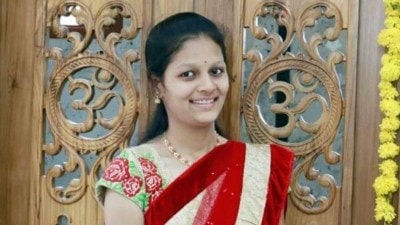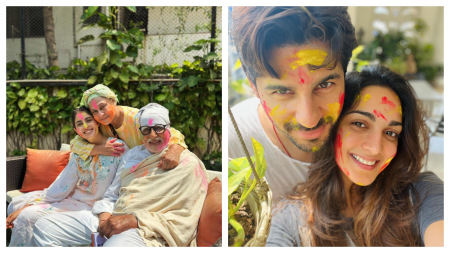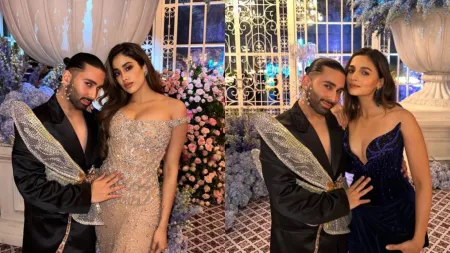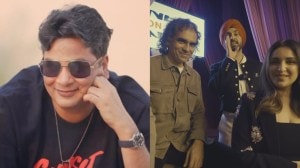- India
- International
Bhanu Athaiya (1929-2020): India’s first Oscar winner, creator of hit Bollywood moments and costumes for 60 years
Bhanu Athaiya passed away in the early hours of Thursday in Mumbai. She had been diagnosed with meningioma in 2012 but had continued to work; her last costume design was for the Marathi film Nagrik in 2014.
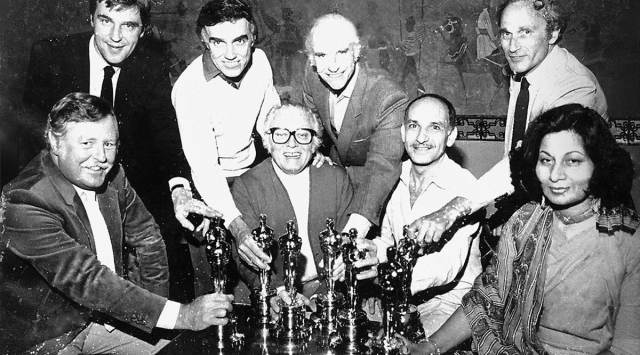 Athaiya with the Gandhi crew at the Oscars.(Courtesy: Prinseps)
Athaiya with the Gandhi crew at the Oscars.(Courtesy: Prinseps)From the khaddar saris worn by Rohini Hattangady as Kasturba in Gandhi to Gracy Singh’s bright red-and-orange bhandej dupatta in Lagaan, Bhanu Athaiya gave new meaning to the purpose of costumes. Using research and detail, she captured the real India in her costumes, and never used ornamentation and embellishment as crutches. Her career spanned 60 years and about 100 films, and she was India’s first Oscar winner.
Athaiya passed away in the early hours of Thursday in Mumbai. She had been diagnosed with meningioma in 2012 but had continued to work; her last costume design was for the Marathi film Nagrik in 2014.
Bhanu Athaiya made her debut in 1953, designing costumes for Kamini Kaushal in Shahenshah and Aas. She followed it up with Guru Dutt’s CID (1956), and went on to become a part of his core team, doing Pyaasa in 1957, Chaudhvin Ka Chand in 1960, and Sahib Biwi aur Ghulam in 1962. Her other popular projects include Brahmachari (1968), Guide (1965), Agneepath (1990), Lagaan (2001) and Swades (2004). For some time, she was the only woman costume designer in the industry.
Athaiya shared her 1982 Oscar for Gandhi with John Mollo. The film’s director, Richard Attenborough, described her as “the revered doyenne of Indian costume designers” in his foreword to her memoir, The Art Of Costume Design.
Recalling the riot scene in the film, couturier Tarun Tahiliani said: “She had a deep understanding of what India was and that’s what she brought to the screen. To be able to create a vision of India through 100,000 people on the sets of Gandhi, that’s unparalleled. She was the right blend of aesthetic and intellect. We don’t see that anymore in Bollywood. For Bhanu it was all about the little details around her.”

In 2012, Athaiya returned her Oscar to the custody of the Academy of Motion Picture Arts and Sciences. She was apprehensive of the award’s security in India, considering the theft of Rabindranath Tagore’s Nobel Prize medal from Shantiniketan some years previously.
Bhanu Athaiya (née Rajopadhye) was born and raised in Kolhapur. Her father was a painter and she was the third of seven children. Athaiya came to Mumbai in 1945 and joined the Sir JJ School of Art. She became the first, and only, woman to be invited to join the Bombay Progressives, and was part of their seminal exhibition in 1953 at the Bombay Art Society’s Salon on Rampart Row.
Her artistic career, however, was short-lived. She branched out to making illustrations for fashion magazines such as Fashion & Beauty and Eve’s Weekly. She soon quit art altogether, and was accused by her peers of turning “commercial”.
Art historian Dr Zehra Jumabhoy said, “As the only woman in the (Bombay Progressives) Group, she is highly significant. She left because she needed to make a living; it was a choice to go into fashion and then costume design, as these would allow her to be financially independent. Her aesthetic style didn’t have a chance to develop, but if you look at Krishen Khanna’s or V S Gaitonde’s work in the 1950s, you can see the similarities Bhanu shared with them.”
In many ways, Athaiya the artist had just found a different canvas for her designs. She had her workshop in Colaba, which moved to Warden Road in the 1970s. Some of the most memorable costumes in Bollywood were her handiwork: Mumtaz’s pop orange sari in ‘Aaj kal tere mere pyaar ke charche’ from Brahmachari (1969), Vyjayanthimala’s iconic costume in Amrapali (1966), and many others.
Bhanu Athaiya is survived by her daughter Radhika Gupta, who describes her mother as “God gifted”. Athaiya’s ethnic knowledge and research were tremendous, she said, and recalled her mother travelling to Ajanta and Ellora to research Amrapali’s costumes. “I grew up watching my mother shoot off designs in literally 10 minutes. I was born at 7.30 in the morning, and I hear that my mother was working on her last sketches till a quarter to 4,” Gupta said.
Click for more updates and latest Bollywood news along with Entertainment updates. Also get latest news and top headlines from India and around the world at The Indian Express.
Photos
Must Read
Apr 19: Latest News
- 01
- 02
- 03
- 04
- 05











